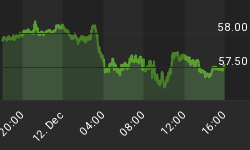Today, we will discuss one of Jesse Livermore's conclusions about the stock market.
One of the conclusions he reached was that the stock market was a reflection of money flows. He postulated that if money was flowing into the stock market, it would rise. Conversely, if money was leaving the market, it would fall.
It sounds pretty simple doesn't it? So a number of years ago, we began plotting the daily amount of Liquidity Flows in and out of the stock market.
Here is a description of today's chart that we posted below ...
First, there is a thick horizontal line going through the middle of the chart. Above that line is where the amount of Liquidity is in Expansion , and that is where the stock market should move up. Below that line, is where Inflowing Liquidity is in Contraction ... and when that happens, the market will move down according to Livermore's observations.
By the way, you can see that there are 4 Quadrants on the chart. Two above and two below the middle, horizontal line. Quadrant 1 is where enormous amounts of Liquidity are pouring in, and Quadrant 4 is where enormous amounts of Liquidity are pouring out of the market.
Although we post about 3 dozen charts every day for our subscribers, this is one of my favorite charts. You can quickly see why, if you observe how the NYA Index moves while in Quadrant 1 and Quadrant 4. The big up or down moves happen when Liquidity Flows are in these Quadrants.
The message is clear for many investors ... "Be in invested when the Liquidity Flows are in Quadrants 1 or 2 ... especially Quadrant 1 ".
And, "Be in cash when the Liquidity Flows are in Quadrants 3 or 4 ... especially Quadrant 4 ". Alternatively, Quadrant 4 is a good place for those who want to short the market.
So, what is happening now?
Well, the market is trying to decide whether or not it should take its third leg up in this Bull market. With all the EU problems, Greece, and high risk concerns that we have been seeing, Liquidity Inflows have been oscillating just above and below the black, horizontal center line . Specifically, Liquidity has oscillated between Quadrants 2 and 3. This is the reason why the market has been so volatile, and why it has been unable to trend in any direction. The big up trend that many investors want to see, needs to have Inflowing Liquidity in Expansion territory , and in Quadrant 1.
What Liquidity Levels are the best for investors?
For the best safety in "long positions", investors would want to see the Liquidity Inflows in Quadrant 1. For the best safety in "short positions" investors would want to see the Liquidity Inflows in Quadrant 4.
This chart is posted every day in Section 4, Chart 8-2 of our www.StockTiming.com - Standard Subscriber site.

















